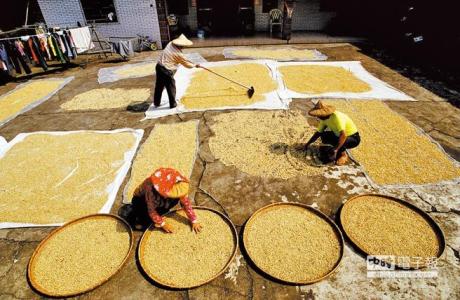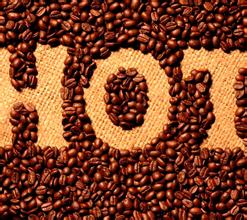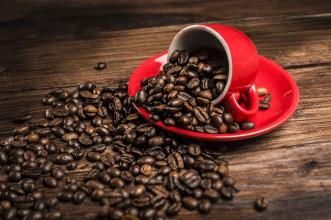How to confirm the shape of Brazilian yellow bourbon coffee-flavored beans
[country of production]: Brazil (Brazil) [producing area]: Cerrado [Manor]: Chateau Bau (Fazenda Bau) [Variety]: yellow bourbon Yellow Bourbon [Grade]: NY.2 [growth altitude]: 1100-1200m [treatment]: solarization Natura
The raw beans are a little smaller, but the appearance is quite good, the appearance is yellowish green and there are few defective beans. After shallow baking with the PROBAT bean roaster, everyone tried it for a round, which was thick and dry, with a smooth oil texture and soft acidity, with floral and berry flavors.
Bourbon species, native to Bourbon Island in the Indian Ocean (now known as Reunion Island), is the second species caused by Typica mutation. It belongs to the oldest existing coffee variety. The green fruit appears bright red when ripe, while the yellow bourbon species is derived from the cross between bourbon species and other varieties. Because of its low yield and relatively intolerant to wind and rain, it has not been widely planted. However, when planted at high altitude, it will have excellent flavor performance, which is more common in recent years.
Among the many varieties of coffee in Brazil, yellow bourbon is one of the most outstanding varieties. Generally speaking, yellow bourbon changes from green to yellow to red, but the appearance of yellow bourbon only stays in yellow. The yellow bourbon, which grows at high altitude and is sun-treated, has an excellent flavor.
Properly treated sun beans are rich in flavor and sweeter, but the sun is easy to have miscellaneous beans, so it is not easy to distinguish between unripe beans. When we choose beans, we usually pick and taste a small amount of beans before a large batch, and then bake and taste a small amount of beans in large quantities, before and after the cup test to determine whether the beans are of the same level.

Important Notice :
前街咖啡 FrontStreet Coffee has moved to new addredd:
FrontStreet Coffee Address: 315,Donghua East Road,GuangZhou
Tel:020 38364473
- Prev

Sidamo Coffee Flavor description Taste characteristics treatment method Grinding scale
Sidamo coffee flavor description, taste characteristics, processing method, grinding scale, Sidamo introduction: it is a very large producing area in Ethiopia, and even the well-known Yegashev producing area is in Sidamo. Sidamo can also be said to be the birthplace of sun bean treatment, and most of the good sun drying comes from Sidamo, among which the most famous sun beans are Sidamo red cherry.
- Next

2017 fresh fruit price of Yunnan coffee purchase price
2017 Yunnan Coffee fresh Fruit Price since the late 1980s, Nestl has been involved in the Chinese coffee industry, investing in the industry with the Chinese government and the United Nations Development Programme (United Nations Development Programme). After that, Starbucks set up a processing plant and a farmer support center in China.
Related
- Detailed explanation of Jadeite planting Land in Panamanian Jadeite Manor introduction to the grading system of Jadeite competitive bidding, Red bid, Green bid and Rose Summer
- Story of Coffee planting in Brenka region of Costa Rica Stonehenge Manor anaerobic heavy honey treatment of flavor mouth
- What's on the barrel of Blue Mountain Coffee beans?
- Can American coffee also pull flowers? How to use hot American style to pull out a good-looking pattern?
- Can you make a cold extract with coffee beans? What is the right proportion for cold-extracted coffee formula?
- Indonesian PWN Gold Mandrine Coffee Origin Features Flavor How to Chong? Mandolin coffee is American.
- A brief introduction to the flavor characteristics of Brazilian yellow bourbon coffee beans
- What is the effect of different water quality on the flavor of cold-extracted coffee? What kind of water is best for brewing coffee?
- Why do you think of Rose Summer whenever you mention Panamanian coffee?
- Introduction to the characteristics of authentic blue mountain coffee bean producing areas? What is the CIB Coffee Authority in Jamaica?

